Aviation Now seen from ASEAN! ~The Future of Aviation through the COVID-19 ~
- Colloquium
- Aviation and Airport
The 146th Transport Policy Colloquium Bangkok Report~Startup Series Part 2~
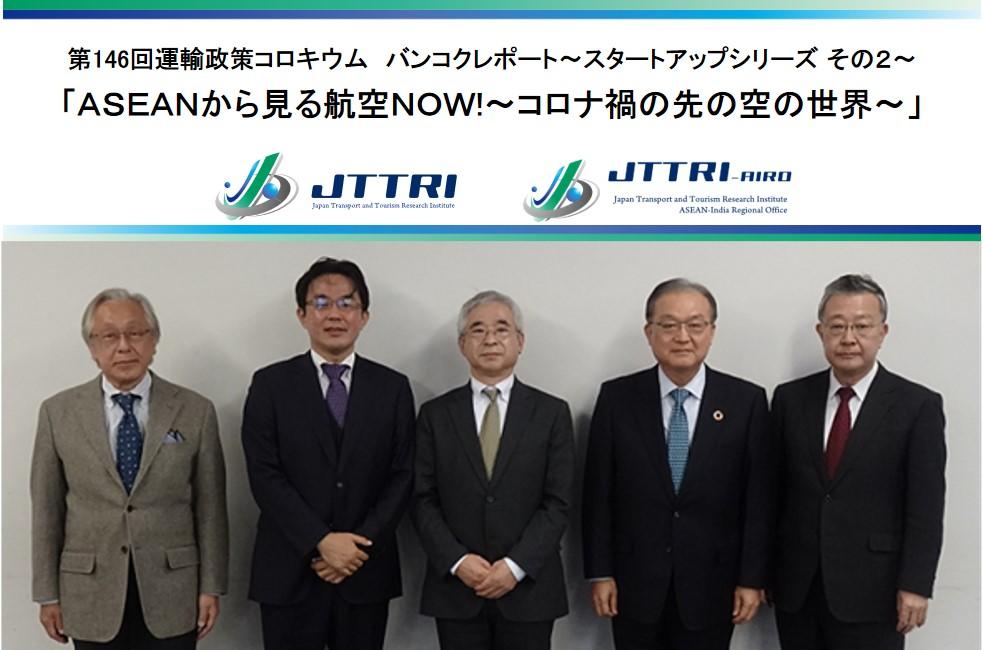

| Date / Time | Fri, Nov 26,2021 15:00~17:00 |
|---|---|
| Event Number | The 146th |
| Theme | Aviation Now seen from ASEAN! ~The Future of Aviation through the COVID-19 ~ |
| Lecturer | Lecturer:YAMASHITA Yukio Senior Director and Senior Research Fellow Japan Transport and Tourism Research Institute ASEAN-India Regional Office Commentator:HANAOKA Shinya Professor Department of Transdisciplinary Science and Engineering School of Environment and Society Tokyo Institute of Technology <discussion> Coordinator:YAMAUCHI Hirotaka President for Research, Japan Transport and Tourism Research Institute (JTTRI) |
Event Summary
The aviation industry in Southeast Asia, like elsewhere in the world, has been affected by the COVID-19 pandemic. There has been a sharp decline in the number of air passengers both domestically and internationally, and a corresponding slump in the management of airlines, which has led to some business failures and other moves. On the other hand, the economic growth of the region and the increase of tourism exchange will remain unchanged in the medium to long term, and there are some efforts by the public and private sectors to solve these issues continuously. But there is not so much well-organized information on them. For this reason, this colloquium will provide an overview of recent trends in aviation in Southeast Asia, including the recent impact of COVID-19, medium- and long-term topics such as airport development, MRO (Aircraft Maintenance, Repair and Over-haul), and aviation human resource development, as well as the ASEAN’s Single Aviation Market and Air Transport Agreement. In addition, we will examine the issues of aviation in Southeast Asia, with a mainly focus on Thailand, and provide implications for Japan.
Program of the seminar is as the following
| Opening Remarks |
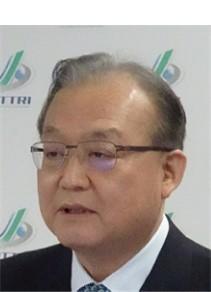
SHUKURI Masafumi |
|---|---|
| Lecturer |
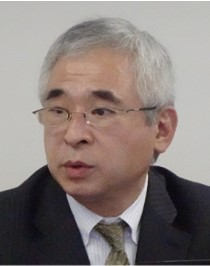
YAMASHITA Yukio |
| Commentator |
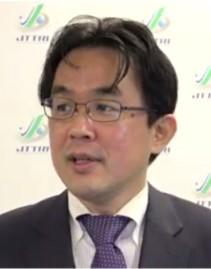
HANAOKA Shinya |
| discussion |
<Coordinator>
YAMAUCHI Hirotaka President for Research, Japan Transport and Tourism Research Institute (JTTRI) 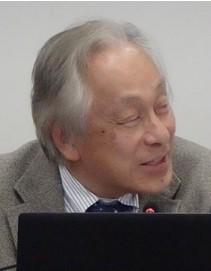
|
| Closing Remarks |
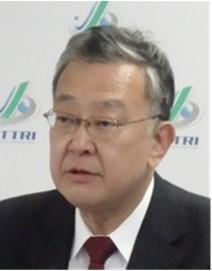
OKUDA Tetsuya |
Outline of the seminar
Yamashita Yukio (Mr.), Senior Research Fellow and Senior Director, ASEAN-India Regional Office (AIRO) of the Japan Transport and Tourism Research Institute (JTTRI), gave a presentation entitled “Aviation Now Seen from ASEAN! - The Future of Aviation through the COVID-19 -”. The following are the key points of his presentation and other reviews in the “146th Transport Policy Colloquium Bangkok Report~Startup Series Part 2~ Aviation Now Seen from ASEAN! - The Future of Aviation through the COVID-19 -.1. Key Points of the Presentation
◎ Chapter 1: Status of COVID-19 and Aviation mainly Thailand
〇 The trend of the "Daily Number of Infected People with COVID-19" in the six major ASEAN countries (Indonesia, Malaysia, Philippines, Singapore, Thailand and Vietnam) is generally similar, but the details show that the timing of increase or decrease of the number of infected people differs slightly from country to country. On the other hand, if we look at the change in the "Number of Infected People per 1 million Population", it shows a different pattern from the transition in the "Daily Number of Infected People with COVID-19". Furthermore, the "Vaccination Rate for Two Vaccinations" shows that the number of people infected is not necessarily being held down in countries with high vaccination rates.
〇 Looking at the "Air Passenger Results at Six Airports Operated by Airports of Thailand PLC.", that the six airports are in comparably high demand for flights in Thailand, there is a similar trend to "Results at Narita International Airport and Haneda International Airport”. Conversely, regarding the "Air Cargo Results" was similar to the latter results in 2019 and 2020, but in 2021 there was no recovery to the degree of the latter one because of activity restrictions by order of Thailand Government due to COVID-19.
〇 In considering future flight demand, physical constraints such as immigration procedures and isolation after entry to Japan are major burdens, so it is important to devise further measures in Japan to reduce them. According to relaxes of the physical burden, it seems that business demand would recover antecedent, and tourism demand will recover later.
◎ Chapter 2: Trends in the Development of Airports in Thailand and Other Countries
〇 The development of airports in Thailand is implemented based on the "Thai Transport Infrastructure Development Strategies (2015 - 2022)" established by the Ministry of Transport of Thailand. In the strategies, airport development is focused on " Enhancing Air Transport Capability”. Actually, efforts are being made to expand airport capacity in line with the increase of air traffic demand at Suvarnabhumi International Airport, Don Mueang International Airport, and U-Tapao International Airport, and others. Furthermore, in the improvement and development of those airports, the development of railway access to airports is also included. Of particular note is the three-airport high-speed railway access plan that will connect the three airports (Suvarnabhumi International Airport, Don Mueang International Airport and U-Tapao International Airport) by high-speed railway is currently moving forward.
〇 Indonesia, Singapore, Vietnam, and the Philippines, in addition to the Thailand, are also implementing airport development in response to the growth in demand for air travel and in response to deterioration of their airports.
〇 In some countries, such as Thailand and Vietnam, development is being implemented based on a basic plan for airport development. There are countries, such as the Philippines in which the basic plan cannot be found, and airports are being maintained based on private proposals. Through such information, there are various philosophies regarding ways of airport development.
〇 Perhaps Japan’s know-how and technology about development airport and around area would be useful for airport developments in ASEAN member states.
◎ Chapter 3: Trends in Aviation as an Industry in Thailand
〇 In Thailand, the aviation industry is positioned as a priority industry for Policy Vision Thailand 4.0, which has been incorporated into Thailand's 20-year national strategy. There is focus on airport development and human resource development. As for detailed project, in the Eastern Economic Corridor Development Plan, the U-Tapao International Airport (Aerotropolis) Development Project is moving forward. The U-Tapao Aerotropolis Project which includes the U-Tapao International airport development and the three-airports high-speed railway plan that will connect Suvarnabhumi International Airport, Don Mueang International Airport and U-Tapao International Airport by rail has also been going ahead.
〇 In the U-Tapao Aerotropolis Project, in addition to the U-Tapao International Airport development, the aviation industry business facilities, in particular aircraft maintenance so called MRO (Maintenance, Repairs and Overhaul) and aviation-related training facilities, have been developing in the airport area and its surrounding area.
〇 As an example of human resource development in the aviation sector, a university organization named the International Academy of Aviation Industry (IAAI) was set up in 2016, and pilots and engineers training program for civil aviation, similar to the training provided by private universities in Japan, has been introduced.
◎ Chapter 4: Trends Relating to Aviation in the ASEAN Community
〇 Aviation activities in the ASEAN community are proceeding based on the Kuala Lumpur Transport Strategic Plan. Three of these, namely (1) the Single Aviation Market, (2) the Aviation Agreement, and (3) the Air Traffic Management (ATM), are considered to be fundamental matters. Those of planned initiatives are moving forward according to the plan.
〇 Of these, for ATM, as base organizations that lead ATM Research field in the ASEAN region, there are the “Air Traffic Management Research Institute” in Singapore that has a research theme of ATM and the "AEROTHAI" (Aeronautical and Radio Authority of Thailand) in Thailand, a Thai Air Traffic Control and Air Communications Services Provider that provides such services and conducts research on ATM. We need to keep our eyes on their future activities.
2. Review of the Commentator Session
Later his presentation, the commentator, Dr. Hanaoka Shinya (Mr.), Professor of the Dept. of Transdisciplinary Science and Engineering, School of Environment and Society, Tokyo Institute of Technology, gave a supplementary explanation of the Single Aviation Market and Aviation Agreement in the ASEAN Community, among the presentation given by Mr. Yamashita. He also showed his point of views about the Future of the ASEAN Aviation Market.
• AEC, called the ASEAN Economic Community, was launched at the end of 2015. There is “Transport area“ specipyed in the "ASEAN Connectivity," which is one of the key areas of the initiatives, and there is the ASAM (ASEAN Single Aviation Market) as one of highlighted items.
• Of the nine freedoms in international air transport, particularly, the important fundamental rights are the freedom to transport from own country to another country (the third freedom right), the freedom to transport from another country to own country (the fourth freedom right) and the freedom to transport beyond another country (the fifth freedom right). These liberalizations are called Open Sky. The ASAM is including up to the fifth freedom, but the freedom of cabotage (the ninth freedom) and the freedom of trilateral transport (the seventh freedom) considered in the EU Single Aviation Market are not covered in the ASAM.
• ASEAN's open sky policy began in 1995 and discussion regarding liberalization of civil aviation in the ASEAN began in 2004. In the same year, a roadmap called RIATS (Roadmap for Integration of Air Travel Sector) was formulated. In 2009, a framework called MAAS (Multilateral Agreement on Air Services) was established, and in 2010, a framework called MAFLPAS (Multilateral Agreement for Full Liberalization of Passenger Air Services) was also established. MAAS and MAFLPAS have appendices. They are methods to come into force by countries ratifying the appendices. In the method of the ASEAN cases, it has adopted the ASEAN-X (ASEAN minus X) approach, which is effective upon ratification by three countries. Although some countries, such as the Philippines and Indonesia, opposed it, eventually ratifications by all member states were completed in 2016.
• Later, Protocol 3 was formulated in October 2017 and Protocol 4 was formulated in November 2018 as an agreement on code-share operations and Air Traffic Rights for domestic flights. These were ratified by nine countries other than Indonesia.
• Based on the following information about the changes in the number of passengers on international and domestic flights in major ASEAN countries, the changes in the number of seats provided for flights, and the share of the number of seats provided by LCC (Low Cost Carrier) by distance between zones, each countries, and FSC (Full Service Carrier ) / LCC tended to increase with some exceptions after liberalization in 2016.
• In 2009, Indonesia's airline carriers set maximum fares for each service category (no-frill, medium, full service) in the Civil Aviation Act, and two of airline carriers and their group companies have become an oligopoly on the main routes.
• Looking at the measurement results of OD (Origin, Destination) pairs of 30 major airports in Northeast Asia and ASEAN regarding the impact of ASAM, from 2010 to 2017, LCC has clearly increased both in terms of the number of airlines and passengers. Conversely, the number of airlines and passengers decreased for FSC.
〇 Professor Dr. Hanaoka expressed his point of view about the Future of the ASEAN Aviation Market. Its summary is showed below.
• “Work” can be substituted for others (depending on the work content), and the necessity of moving for work is reduced by the popularization of online activities. On the other hand, “leisure” is consumed by oneself, and “Tourism” cannot be switched to others.
• If there is an increase in the middle class who have time and income to spare, it will spur an increase in movement for tourism purposes. Even in ASEAN countries, according to the increase in leisure time, tourism movement and international travel for private purposes will most likely increase.
• The LCC share of domestic flights of ASEAN countries is remaining at a high level. Conversely, within the ASEAN region, which is a short-haul international flight, there is room for growth, mainly in the LCC.
• The medium range market (3,000-6,000 km) has covered Southeast Asia including Japan and China, and Australia, and South Asia mainly focusing on India. LCC increased steadily over this distance range. Many LCCs have already entered, such as Jetstar Asia, AirAsia X, Scoot, and Thai Lion Air. Including FSC, the competition is already tough, but since flight destinations have tourism resources, there is potential for a large increase in air passenger demand mainly for tourism purposes.
3. Review of the Discussion and Q&A
Discussion and Q&A were held with Dr. Yamauchi Hirotaka (Mr.), President for Research of the Japan Transport and Tourism Research Institute, as a coordinator, and Mr. Yamashita and Dr. Hanaoka. The main discussion and Q&A are shown below.
〇 A multi aviation agreement was signed by ASEAN and the EU in June this year. It would be having a great impact on aviation. How will it be seen the impact?
• Although the contents of the agreement between ASEAN and the EU have not check by me (Dr. Hanaoka) directly at present, airlines in member countries can operate freely on any route between regions, so I believe that mega-carriers operating between Europe and ASEAN will expose to stiff competition. I also think that it could have a significant impact on British airlines that will not be able to enjoy the benefits of this agreement between two regions because UK exited from the EU due to Brexit.
〇 Thai government was felt taking positive policies for civil aviation, including airport developments. Do you have any information received from the Thai government about aviation directory?
• I (Mr. Yamashita) believe that AIRO's activities will be a research survey earned on foot, but (unfortunately there has been some effect from the COVID-19 and the like) I have not yet heard directly about aviation policy from the related organization. Although the Thai government is making efforts to position the aviation industry as an important industry on the National Strategies, I have heard from relevant parties that Thai airlines feel that support from the Thai government has been inadequate. Because of that, Thai airlines are launching a new organization and implementing demand activities to the Thai government. From this point of view, it seems that the aviation policy advanced by the Thai government and the expectations of airlines are slightly out of sync.
〇 We have heard that the Thai government is active in airport development, but how should we view the relationship between the airport development and national policies for tourism from the point of views about global aviation market and discussion at the recent Tourism Colloquium (held on October 15)?
• Of course, in Thailand, the economic effect of tourism sector is large, and the tourism nation policy is being promoted well. However, they are also placing an emphasis on introducing overseas funds into the economy to improving civil aviation capacity reflect on tourism, such as the Eastern Economic Corridor Development. In order to attract investment from overseas, it is necessary to develop effective infrastructure. In addition to such idea, to tackle with the increase in aviation demand and enhancing those capacity, it is thought that airport development and its around area development as to support economic development of the country are in motion. However, it is not meaningful to develop only “boxes” as infrastructure facilities. It is also important to secure the necessary human resources to fit infrastructure facilities. They say that discussions on human resource training within the government are ongoing.
〇 We also hear the voice that Japanese airport affiliates want to participate in a deoxygenation relationship, but is there any scope for Japanese companies to enter airport development for ASEAN?
• It is thinkable that there are rooms for Japanese companies to get involved. For example, noise issues around airports have become a major problem in ASEAN countries. Japanese companies have become involved in a Vietnam airport with noise countermeasures. ASEAN countries are also seeking support in the field of aviation human resource training. I (Mr. Yamashita) often hear that Japanese companies want to enter their business into famous popular airport. But as such airports have high barriers against new comer, it is one of idea to access less popular airports as first approach.
〇 In the development of airports in Thailand, I would like to ask if there are any differentiation for development ways between Japan and Thailand.
• It was said in general that cooperation between organizations has not gone smoothly in Thailand's infrastructure development. In Japan, in infrastructure development, including area development, coordination is implemented with the participation of the government, local governments, and projects related parties, and the like, but for Thailand, such coordinated efforts are thought to be weak. That point seems to be different from Japan. It seems that it would be beneficial to use such approach based on Japan's experience.
〇 Look at the situation like KLM Airlines, which connects Kuala Lumpur to Jakarta, and Emirates Airlines and the like, which connects Yangon to Phnom Penh, it seem to have seen a decrease in the operation by the outside airlines of ASEAN in the ASEAN region. However, as a result of the ASEAN open sky policy, have the outside airlines of ASEAN been weeded out, or has the demand for ASEAN simply increased and the operation shifted to Point-to-Point flights?
• It is an example of the operation utilizing the fifth freedom right, but I (Dr. Hanoka) have heard from someone at ICAO that flights themselves using the fifth freedom right have decreasing globally. The reason for this is thought to be that due to increased competition from routes departing from their own countries, it is no longer possible to operate with the fifth freedom right between other countries. Competition has intensified because of the open sky policy, which has forced airlines to specialize in routes where they can profit, and the number of operations utilizing the fifth freedom has decreased.
〇 How do you see the impact of alliances in the context of the liberalization of ASEAN?
• Although Thai Airways International and Singapore Airlines participate in the Star Alliance, there is little action in alliance competition within ASEAN, and the composition of LCC versus FSC is more on my mind to take care. I (Dr. Hanaoka) think the FSC is in a situation where it is considering the strategy of which routes and how to profit in order to stand up to LCC.
The end


